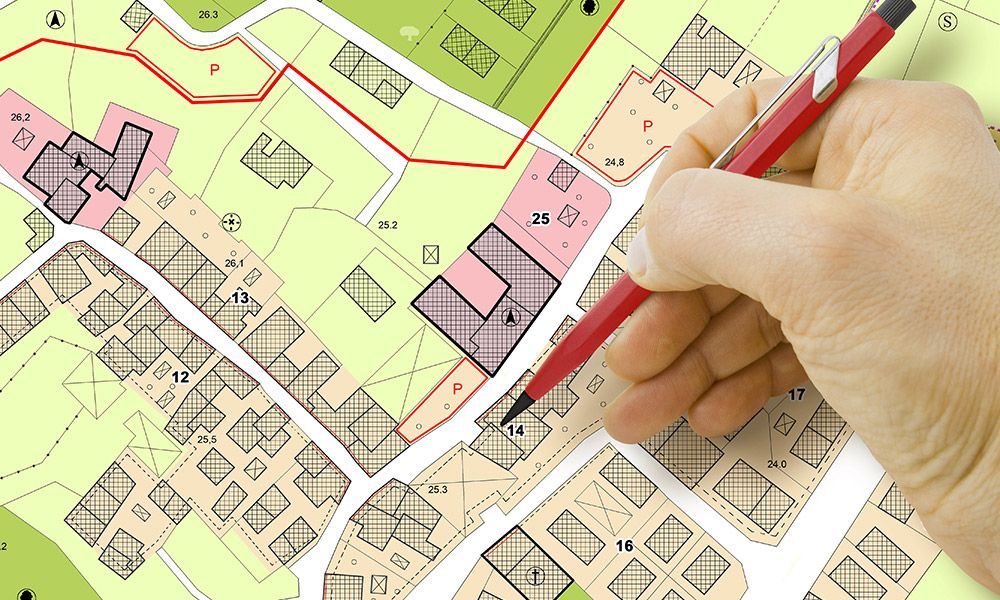FAQ
A few of the common frequently asked questions
Planning and Enforcement Action.
In response to many clients who request advice on the enforcement of planning control I have set out below the background to the legislation and policy guidance set out in:
Circular 10/97 Enforcing Planning Control: Legislative Provisions and Procedural Requirements
Circular 10/97 Good Practice Guide
PPG18 ‘Enforcing Planning Control’
PPG18 advises:
“Enforcement is, without doubt, the most difficult part of the planning system to administer. It attracts more litigation than the rest of the planning process put together and the number of instances where local authority notices have to be corrected or quashed for legal inaccuracy is very considerable. Nevertheless, enforcement powers are the teeth of the whole system and without them it would be ineffectual”
“The effective use of enforcement powers is central to ensuring a fair and transparent development control system. Disregard of the rules by a minority must not be allowed to bring the whole planning system into disrepute”.
Points that Councils are required to consider in deciding whether or not to pursue enforcement action include:
A breach of planning control is not (in most cases) criminal in itself.
The actions taken by the planning authority must be proportionate to the breach.
Planning permission may be sought retrospectively.
Enforcement is a matter for the discretion of the local planning authority and is founded on the principle of expediency.
This means, for the most part, enforcement powers are remedial with no immediate criminal liability for breaches of planning control.
The decision to enforce must be made on planning grounds.
Central to whether or not Councils pursue enforcement action is the question whether the breach of planning control unacceptably affects public amenity or the existing use of land or buildings meriting protection in the public interest.
Specifically, PPG18 advises that whilst unsatisfactory to start development first, enforcement action should not be taken solely to regularise development which is otherwise acceptable on its planning merits.
Instead, Councils are encouraged to focus limited resources on significant breaches of control.
Nigel Dalton Architectural Services will be pleased to advise on the most appropriate means of resolving enforcement concerns whether relating to your own land or otherwise affecting your interests such as development on neighbouring land.
Guide to Local Development Frameworks.
(extracts from Planning Portal www.planningportal.gov.uk)
Introduction to Local Development Frameworks
The government has introduced a new plan system to manage how development takes place in towns and the countryside. The Planning and Compulsory Purchase Act 2004 introduced a new 'two-tiered' plan system, comprised of:
Regional Spatial Strategies (RSS) - prepared by the regional planning bodies (or in London the spatial development strategy prepared by the Mayor of London). These set out a broad spatial planning strategy for how a region should look in 15 to 20 years time and possibly longer.
Local Development Frameworks (LDF) - a folder of local development documents prepared by district councils, unitary authorities or national park authorities that outline the spatial planning strategy for the local area.
The Local Development Framework, together with the Regional Spatial Strategy, will determine how the planning system will help to shape your community.
This guide explains the purpose of the different kinds of documents in a Local Development Framework. It also explains the crucial role of community involvement in the plan-making process - one of the most important elements of the new system.
Local Development Framework (LDF) components
Development plan documents
Local development scheme
Statement of community interest
Annual monitoring report
Supplementary planning documents
Local development orders and simplified planning zones
LDF documents fall into two categories: Required and Optional.
1. Development Plan Documents (DPDs)
A Local Development Framework must include a Core Strategy and a Proposals Map. It may also contain additional optional development documents such as Area Action Plans. These are classed as DPDs and outline the key development goals of the Local Development Framework.
DPDs are subject to rigorous procedures of community involvement, consultation and independent examination. Once adopted, development control decisions must be made in accordance with the DPDs unless material considerations indicate otherwise. DPDs are also subject to a Sustainability Appraisal to ensure economic, environmental and social effects of the plan are in line with sustainable development targets. 1.1 Core Strategy - (Required)
The core strategy is the principal development plan document contained within the Local Development Framework. It sets out the general spatial vision and objectives for delivery of the Local Development Framework and can also include 'Strategic Site Allocations'. It is a crucial part of the local development framework in that it positions the council as both a strategy maker and a deliverer of outcomes.
The core strategy also plays a key part in the delivery of the council's sustainable community strategy by setting out its spatial aspects and providing a long-term spatial vision. The core strategy must be kept up to date and all other development plan documents must be in conformity with it and the Regional Spatial Strategy (or the Spatial Development Strategy in London).
1.2 Adopted Proposals Map (Required)
The Adopted Proposals Map should illustrate all site-specific policies in all the adopted development plan documents in map form.
The Adopted Proposals Map should also identify areas of protection such as nationally protected landscape and local nature conservation areas, green belt land and conservation areas.
Separate inset maps may be used to show policies for part of the authority's area, such as the policies for Area Action Plans. The Adopted Proposals Map must be revised as each new development plan document is adopted and should reflect the up-to-date spatial plan for the area.
1.3 Area Action Plans (Optional)
An Area Action Plan (AAP) is a development plan document focused upon a specific location or an area subject to conservation or significant change. This could include a major regeneration project or a growth area.
The AAP should focus on implementation - providing an important mechanism for ensuring development of an appropriate scale, mix and quality for key areas of opportunity, change or conservation.
An AAP should outline protection for areas sensitive to change and aim to resolve conflicting objectives in areas subject to development pressures.
1.4 Other Development Plan Documents (Optional)
These can include thematic documents concerned with housing, employment, retail development etc.
However, additional Development Plan Documents (i.e. beyond the Core Strategy) should only be produced when truly necessary and where the Core Strategy can not guide and/or deliver.
2. Local Development Scheme (Required)
The Local Development Scheme is a public 'project plan' identifying which local development documents will be produced, in what order and when.
The Local Development Scheme acts as the starting point for the community and stakeholders to find out about the authority's planning policies in respect to a particular place or issue, and what the status of those policies. It also outline the details of and timetable for the production of all documents that make up the Local Development Framework over a three-year period.
All local authorities submitted their Local Development Schemes to the Secretary of State by the end of March 2005.
3. Statement of Community Involvement (Required)
The Statement of Community Involvement (SCI) shows how and when planning authorities intend to consult local communities and other stakeholders when preparing documents.
A key outcome of the SCI will be to encourage 'front loading' - meaning that consultation begins at the earliest stages of each document's development so that communities are given the fullest opportunity to participate in plan making and to make a difference.
Every Statement of Community Involvement must provide open access to information, actively encourage the contribution of ideas and representations from the community and provide regular and timely feedback on progress.
4. Annual Monitoring Report (Required)
A report submitted to the government by a local planning authority to assess the progress and the effectiveness of a Local Development Framework.
The Annual Monitoring Report will assess: are policies achieving their objectives and is sustainable development being delivered?
have policies had intended consequences?
are the assumptions and objectives behind policies still relevant?
are the targets set in the LDF being achieved?
To achieve this goal, the Annual Monitoring Report will include a range of local and standard (Core Output) indicators. It should also highlight if any adjustments to the Local Development Scheme are required.
5. Supplementary Planning Documents (Optional)
Supplementary Planning Documents (SPDs) expand or add details to policies laid out in development plan documents, or a saved policy in an existing development plan. These may take the form of design guides, area development briefs, a master plan or issue-based documents.
These documents can use illustrations, text and practical examples to expand on how the authority's policies can be taken forward.
Local authorities must involve the community in the preparation of SPDs. The Planning Act 2008 removed the blanket requirement for all SPDs to be subject to a Sustainability Appraisal to ensure economic, environmental and social effects of the plan are in line with sustainable development targets. LPAs will still need to screen their SPDs to ensure that legal requirements for a SA are met where there are impacts that have not been covered in the appraisal of the parent DPD or where an assessment is required by the SEA Directive.
6. Local Development Orders and Simplified Planning Zones (Optional)
The Local Development Framework may also contain Local Development Orders and Simplified Planning Zones.
A Local Development Order is made by a planning authority in order to extend permitted rights for certain forms of development, with regard to a relevant local development document.
A Simplified Planning Zone is an area in which a local planning authority wishes to stimulate development and encourage investment. It operates by granting a specified planning permission in the zone without the need for a formal application or the payment of planning fees.
Getting Involved.
Having your say on planning in your area
Planning shapes the places where people live and work - so it is right that people should able to take an active part in the process.
Under the new plan system, each local planning authority will produce a Statement of Community Involvement, which will set out how communities will be involved in the revision of local planning documents as well as the consideration of planning applications.
The Statement of Community Involvement must ensure the active meaningful and continued involvement of the community throughout the process and should address the following:
What is the local authority seeking community involvement on? This includes the range of local development documents being consulted upon.
How and when will the community involvement be sought? This should address the possible forms of involvement, including receiving and spreading information, policy and plan development procedures and feedback processes.
Who will be involved? Authorities must make sure they involve the widest possible range of interests - in particular hard-to-reach groups who do not normally participate in planning.
If you want to have a say in the way your local area changes, you should contact your local planning authority to find out how you can get involved.
You can find contact information for your local authority on the Planning Portal.
We will be adding some more information in this section over the next few weeks. If you would like us to add any particular content please contact us.
Thank you







